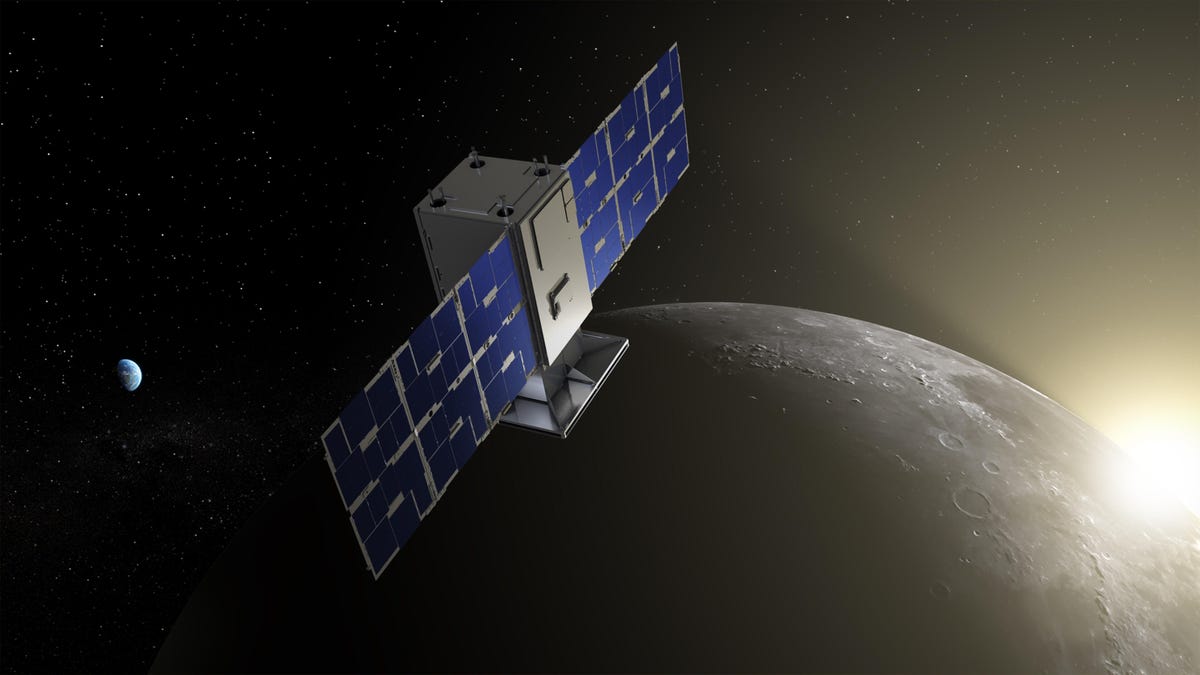Contact With NASA Moon Probe Reestablished After a Day in the Dark
The microwave-size Capstone spacecraft is meant to pave the way for future Artemis missions to the lunar surface.

Capstone will fly in cislunar space -- the orbital space near and around the moon.
NASA is back in touch with its microwave-size Capstone spacecraft after the ship's computers gave the agency the silent treatment for a day. (Capstone is short for the NASA mission officially known as the Cislunar Autonomous Positioning System Technology Operations and Navigation Experiment.)
Everything was going great following the probe's launch on June 28 atop a Rocket Lab Electron booster. On Monday, the probe was successfully deployed from a Photon upper stage and sent in the direction of the moon.
But then it just stopped talking to Earth.
"Following successful deployment and start of spacecraft commissioning on July 4 ... [it] experienced communications issues while in contact with the Deep Space Network," according to a statement from NASA on Tuesday.
The Capstone spacecraft was built for NASA by Colorado-based Advanced Space, and the company is in charge of operating the mission, alongside California's Terran Orbital, which built the Cubesat platform. On Wednesday, Advanced announced on Twitter that it was once again communicating with the Capstone ship.
"The spacecraft is looking happy and healthy," Advanced said.
We have re-established communications with CAPSTONE.
— Advanced Space (@AdvancedSpace) July 6, 2022
The spacecraft is looking happy and healthy.
More details to come. pic.twitter.com/0qm4mU881M
It isn't yet clear what exactly happened or how the issue was resolved. An earlier update from Advanced Space simply said "an anomaly was experienced related to the communication subsystem."
A subsequent update from NASA revealed that the Capstone spacecraft had pinged two ground stations -- one in Madrid, Spain, and the other in Goldstone, California. With this information, NASA was able to determine the probe's "approximate position and velocity in space." However, the agency noted at the time that its first trajectory correction maneuver has been delayed.
Now that it's on its own without Rocket Lab chaperones, the Capstone probe is supposed to use its own propulsion system to navigate to the moon, where it'll attempt to enter a new type of halo-shaped orbit around Earth's storied neighbor. The craft is testing out the same orbit to be used by NASA's upcoming lunar gateway, which'll serve as an orbiting outpost for Artemis astronauts visiting the moon's surface later this decade.
NASA said the Capstone probe is carrying enough fuel that its initial navigation maneuvers can be postponed for several days to compensate for delays. No word yet on when it'll be able to perform those postponed adjustments.
You can keep on eye on the status of Capstone's communications with the Deep Space Network and also track its progress toward the moon using NASA's Eyes application.
Update, July 6: Adds that communications with the Capstone probe have been reestablished.

